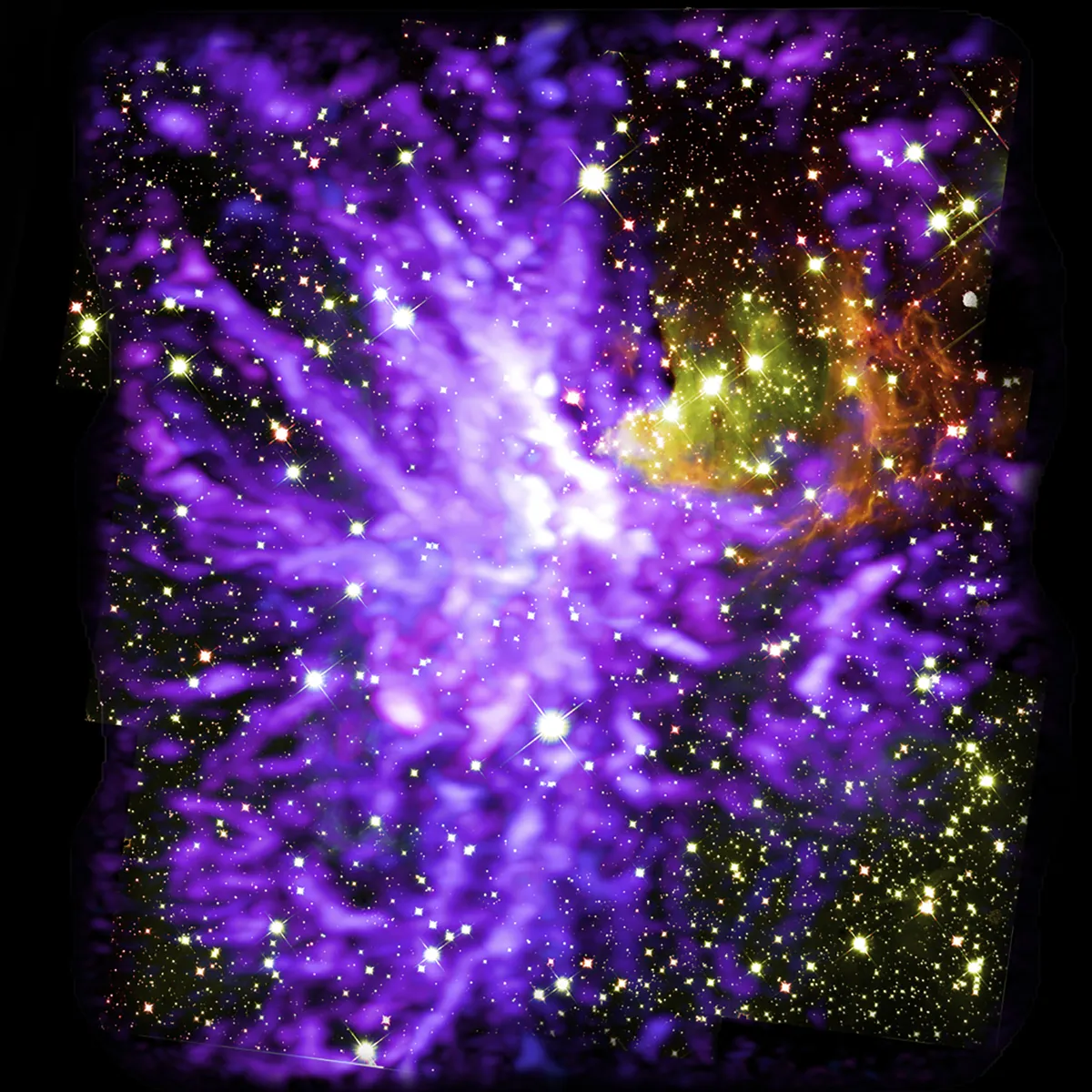
This composite shot reveals star formation in the cluster G286.21+0.17, about 8,000 lightyears away in the Carina region.
A mosaic of 750 ALMA radio images and nine Hubble infrared images, it shows molecular gas clouds (purple) that will coalesce to create stars, and wisps of hot dust (yellow and red) – the remnants left when stellar winds from massive stars blast away the molecular clouds.
"This illustrates how dynamic and chaotic the process of star birth is," says study co-author Jonathan Tan of Chalmers University in Sweden and the University of Virginia.
"We see competing forces in action: gravity and turbulence from the cloud on one side, and stellar winds and radiation pressure from the young stars on the other.
"This process sculpts the region. It is amazing to think that our own Sun and planets were once part of such a cosmic dance."
Read more about this story from the National Radio Astronomy Observatory website.
Image stats
Observatories Atacama Large Millimiter/submillimeter Array, Hubble Space Telescope
Release date 2 July 2020
Image credit ALMA (ESO/NAOJ/NRAO), Y. Cheng et al.; NRAO/AUI/NSF, S. Dagnello; NASA/ESA Hubble
